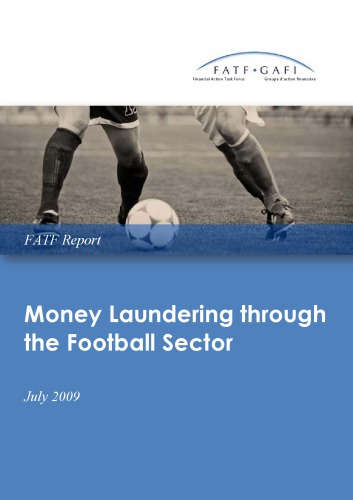

Most ebook files are in PDF format, so you can easily read them using various software such as Foxit Reader or directly on the Google Chrome browser.
Some ebook files are released by publishers in other formats such as .awz, .mobi, .epub, .fb2, etc. You may need to install specific software to read these formats on mobile/PC, such as Calibre.
Please read the tutorial at this link: https://ebookbell.com/faq
We offer FREE conversion to the popular formats you request; however, this may take some time. Therefore, right after payment, please email us, and we will try to provide the service as quickly as possible.
For some exceptional file formats or broken links (if any), please refrain from opening any disputes. Instead, email us first, and we will try to assist within a maximum of 6 hours.
EbookBell Team

5.0
38 reviews
ISBN 10: 9264073574
ISBN 13: 9789264073579
Author: FATF, FSRB, OECD
This report is based on four main sources: an extensive literature review, the analysis of theanswers to a questionnaire sent to FATF and FSRB members; the results of a typology workshop andsubsequent consultation with the football sector. Results to the questionnaire were obtained in October 2008 from 25 countries, mostly European, seven South-American countries, two from Asia and Australia. The responding countries differ widely insize, role and organisation of football in society (ranging from large countries with big football leagues tosmaller nations or nations with only non-professional football). Differences in information, position andinterest in the person or organisation that provided the answers (national football association, governmentrepresentatives, national FIUs, the police or judicial authorities) needed to be taken into consideration aswell. Following the analysis of questionnaires, a workshop on money laundering and the footballsector was held in Monaco in November 2008 as part of the 2008 FATF/MONEYVAL Typologiesmeeting. This workshop was very well supported by members of the FATF, MONEYVAL andrepresentatives of other countries. The following participants were involved in the 2-day breakout sessionwhich considered issues in depth: Belgium, Brazil, Cyprus, Egmont Group, France, International OlympicCommittee (IOC), Ireland, Italy, Monaco, Norway, Russia, Slovenia, South Africa, Switzerland, theNetherlands and the United Kingdom. The study has also relied on the experience and cooperation of the private sector. Arepresentative of the IOC attended the Monaco workshop in November 2008. Consultation withrepresentatives of the Fédération Internationale de Football Association (FIFA) and of the Union ofEuropean Football Associations (UEFA) also took place in January and April 2009. Those representativesreceived a copy of the report and were given the opportunity to comment. All the comments of the private sector were taken into account when considered relevant. Read more...
CHAPTER 1: MONEY LAUNDERING AND SPORTS
CHAPTER 2: STRUCTURE OF THE FOOTBALL SECTOR
CHAPTER 3: VULNERABILITIES OF THE FOOTBALL SECTOR
CHAPTER 4: CASES AND TYPOLOGIES
CHAPTER 5: OVERVIEW OF ANTI-MONEY LAUNDERING INITIATIVES
CHAPTER 6: POLICY IMPLICATIONS
money laundering in sports
money laundering in the 1920s
money laundering football
second largest source of illegal funds in money laundering
Tags: FATF, FSRB, OECD, Laundering, Money